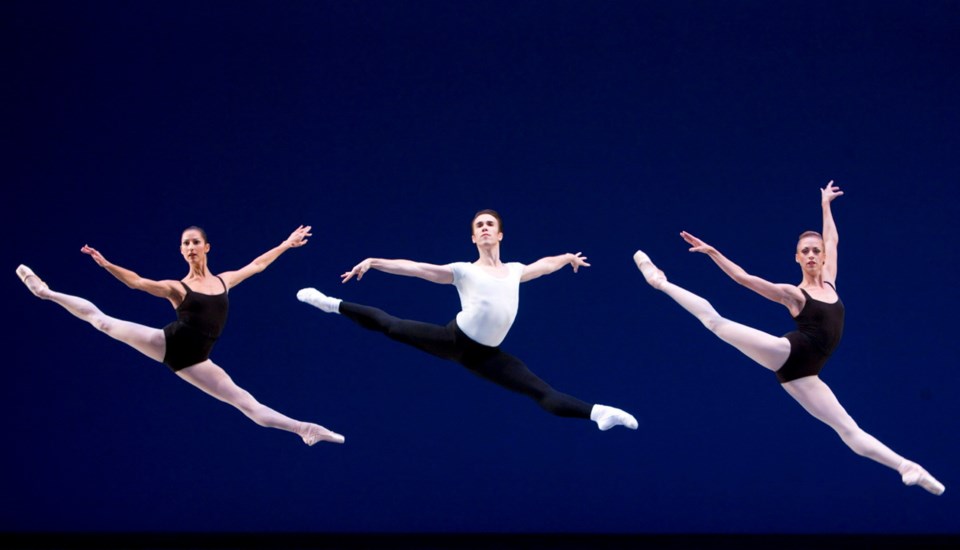If dance is a language then Pacific Northwest Ballet told us many things, Friday night. And what an audience member got out of it — while positive on the whole — would likely differ depending on their fluency.
At the mixed program’s bookends, it told us about history.
Apollo is a perfect example of outdated art — a threatened tongue that doesn’t necessarily resonate with everyday life in 2013, but is beautiful as a relic and representative of what once was. You don’t need to know anything about dance to recognize its objective beauty — the soft delicacy in each movement, the purity of form. Karel Cruz was a lean Apollo and his three muses were graceful in their enchantment.
But as those who speak the language know, there’s also history embedded in this piece. They would recognize how it marked something avant-garde for its time. Its 1928 debut launched Russian-born choreographer George Balanchine, only 24, into the American consciousness for dipping into neoclassicism, a place he would embrace with increasing confidence. Yes, the Greek myth of Apollo was its frame. But Balanchine had begun stripping dance of distracting sets, costume and story, focusing instead on form.
He’d take that to a whole new level with 1957’s Agon, another iconic piece performed Friday. By then, there was no story at all — only a kaleidoscope of 12 dancers, moving in sync and in staggered timing, in sharp angles and long lines. But again, you don’t need to know that to recognize the beauty in symmetry, energy and form.
By 1962, Balanchine would tell an interviewer, “The ballet will speak for itself and about itself.”
But the Pacific Northwest Ballet also told us about humanity and emotion — through more contemporary languages.
Jerome Robbins’ Afternoon of a Faun is a study in narcissism. Two dancers in a studio share what should be intimate moments, but are distracted staring at their own reflections — an imagined mirror played by the audience. Batkhurel Bold tenderly strokes his partner Carla Körbes’ face, but never breaks gaze with himself.
Körbes, the company’s star, proves why from the moment she enters the scene. She’s weightless and confident and commanding of the scene all at once.
But the piece that spoke most closely to this audience was Christopher Wheeldon’s 2005 pas de deux from After the Rain. There’s a true tenderness here. As Maria Chapman falls in slow motion into Karel Cruz, there’s no indication of when her centre of weight shifts onto him, in complete surrender. In another moment, they’re connected at the back and he walks forward only as her feet nudge his and she walks backward. Their synchronized in some moments.
Frozen in others — creating architectural lines, suspending one another. Most incredible were the unusual lifts: At two points, for example, Cruz lifts Chapman in a bridge, holding her at the small of her back as she sustains the form. At another, she’s floating through the air in slow motion, paralyzed in a moment.
Technically, it’s difficult to criticize Pacific Northwest Ballet, especially as one of the most experienced interpreters of Balanchine. With Apollo, they had one of the foremost intepreters of the role as coach, in artistic director Peter Boal. With Agon, they had one of its original dancers, Francia Russell, staging it.
There’s room for improvement in sound — while contemporary dance is often created for electronic scores, it’s just not the same listening to piano and violin over a speaker.
While each of the three pieces Friday night may have spoken to the audience in different ways, they also spoke to one another. Each choreographer represented a different era, but they were descended from a common lineage. And if the more contemporary pieces were more accessible today, they may mean something different to future audiences.
REVIEW
What: Dance Victoria presents Pacific Northwest Ballet
When: Friday night, continues Saturday
Where: Royal Theatre
Stars: 4 (out of 5)



